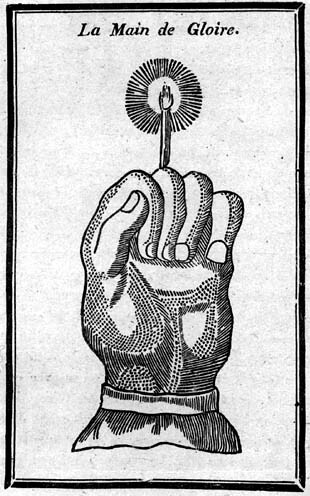Hand of Glory, image sourced here
The Hand of Glory is the dried and pickled hand of a man who has been hanged, often specified as being the left (Latin: sinister) hand, or else, if the man were hanged for murder, the hand that “did the deed.”
According to old European beliefs, a candle made of the fat from a malefactor who died on the gallows, virgin wax, and Lapland sesame oil (the candle could only be put out with milk), and the hand having come from the said hanged criminal, lighted and placed in the Hand of Glory (as in a candlestick) would have rendered motionless all persons to whom it was presented. The Hand of Glory also purportedly had the power to unlock any door it came across.
The legend is traceable to about 1440, but the name only dates from 1707. It was originally a name for the mandrake root (via French “mandragore” and thus “hand of glory”) that became conflated with the earlier legend. The confusion may have occurred because mandrakes are said to grow beneath the bodies of hanged criminals.

